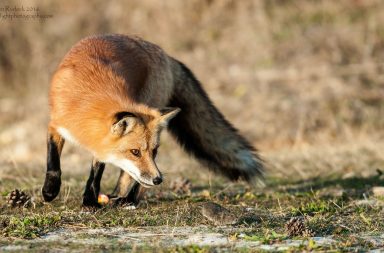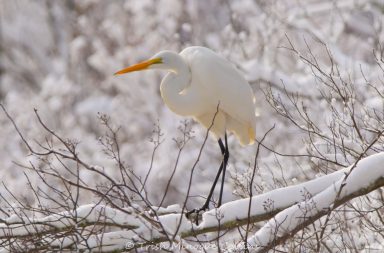NORTHERN PARULA
As spring approaches the early mornings are filled with the calls of Tufted Titmice and Black-capped Chickadees, a sure sign that the warbler migration will soon be upon us. One of these warblers shows behaviors which are similar to Chickadees & Titmice; that warbler is the Northern Parula. Parula means “little titmouse” and historically was called “blue yellow-backed wood warbler”.
The Northern Parula is one of the smallest warblers, and the males are quite striking when in full breeding plumage. Bright blue-grey on the top and white underneath; with an olive patch on the upper back, a bright yellow throat with a rufous band across the chest. The wings sport two bright white wing bars and the eyes have white crescents above and below. Juveniles and females are paler with little or no throat band.
Parulas are early migrants in the South and later arriving in the Northern boreal forests. They like woodlands; red maple or Atlantic white cedar, swamps and the shorelines of rivers or ponds.
The female weaves a nest using “Spanish moss” in the South and “Old Man’s Beard” (a moss like lichen) in the North. (If no moss is available, they will nest in clumps of twigs or pine needles. There has even been a report of nesting in an old piece of burlap caught in a tree!) The nest may have a lining of grasses or leaf fragments. Once woven the nest looks like a “hanging grey pouch” anywhere from 4 to 30 feet above the ground, but 25 feet is the norm. One clutch with 4 to 5 white to cream colored eggs is laid and they are incubated for 12 to 14 days and fledge in 11 to 12 days.
Diet consists of tent caterpillars, gypsy moth caterpillars, spiders, and other insects. Parulas are rather “sedate” foragers, without the frantic movement of other warblers.
The Northern Parula may be hard to see, but they are easy to hear. If you are nearby, you may be lucky enough to see them as they hang upside down on the leaves of trees or as they walk up the tree trunks. The main song of the male is an ascending, buzzy trill; a clear “zeeeeeeeeeZip”, with an abrupt end note. However, there are several variations of that song.
Migration begins in September and the wintering areas are in Central America. It is believed that Northern Parulas once nested on L.I., but either a virus or possibly air pollution eradicated the moss that the Parulas needed for nesting. That would be the bad news – the good news is that the birds still migrate through this area in the spring. In April and early May check forest areas that have water and look low in the trees in the early morning; and as the leaves fill out and it warms-up look higher up.
In the book “Pete Dunne’s Essential Field Guide Companion” the Northern Parula is described as “A tiny, compact, plump-bodied, petite-billed, short-tailed mite of a warbler – so small it might pass for a kinglet.” A perfect description of this wonderful little warbler!
Northern Parulas should be passing through soon, so enjoy seeing one of the gems of the bird world.
The following photos were submitted by members of the Long Island Wildlife Photography Group

Kirk Hatzmann

Geary Bush

Russ Ogden

Mitchell Schlimer
More Images on Pages 2 and 3



